AI in Design: An Exclusive Interview with Lee Birchall, Managing Director of DV8 Designs
As part of Design Insider’s 2024 campaign, we are delving deep into the impact of Artificial Intelligence within the commercial community, examining both the challenges and opportunities it presents. We are excited to share an exclusive interview with Lee Birchall, the Managing Director of DV8 Designs. DV8 Designs is an architecture and interior design practice specialising in commercial and hospitality design with a diverse portfolio that includes airport lounges, food halls, hotels, restaurants, and offices.
Lee Birchall brings over a decade of experience in architectural and interior design with technological innovation. In this interview, he discusses DV8 Designs’ approach to integrating AI into their projects, the specific tools they use to enhance creativity and operational efficiency, Lee shares insights into the challenges faced while implementing AI and his predictions for the future of AI in the design industry.

Lee Birchall, Managing Director of DV8 Designs
Lee, could you start by introducing yourself and giving us an insight into your role and experiences at DV8 Designs, particularly how you’ve melded architectural and interior design with innovation?
I’m Lee, Managing Director of DV8 Designs, an architecture and interior design practice established in 2006. We specialise in commercial and hospitality design, and have a diverse portfolio that includes airport lounges, food halls, hotels, restaurants, and offices amongst others.
When it comes to design, I am fortunate that I can draw on years of experience, complimented with a progressive mind set – nothing beats sketching out an initial design and collaborating with my talented and diverse team and colleagues around a table! I first started in the industry at age 16 in the 90s, when designers initially took to paper and drew by hand. That creative thought process these days is augmented with technology which really enhances the creative result – programmes such as Auto Cad, Enscape, 3D Studio Max – all software that helps us arrive at a concept efficiently, helping us to push creative boundaries.
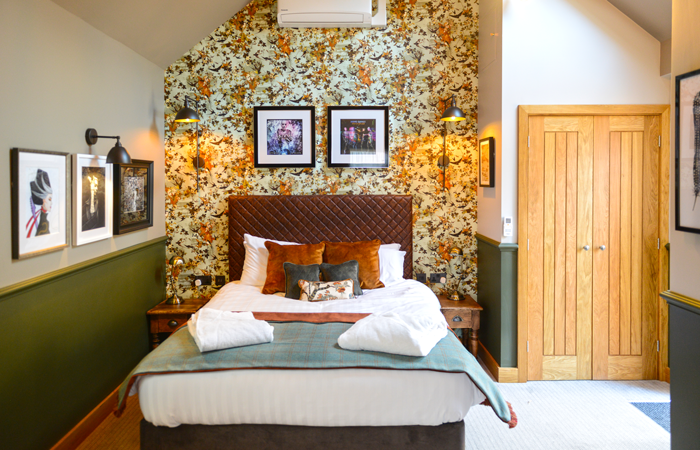
The Guinness Arms Hotel
In your opinion, how is artificial intelligence transforming the landscape of architectural and interior design, especially in the contexts you specialize in, like hospitality and commercial spaces?
Technology allows you to essentially build a wire frame that supports you in decision making. We use a lot of 3D modelling, particularly in large scale projects as it helps the client visualise the space. 3D can also help influence some design decisions – you are given the option to switch tones, colours, patterns, and textures which in turns aids decision making. For the customer journey, it allows designers to plan out junctions and interactions that could be compromised visually on a 2D plan. This type of process is received well by the client, giving a sense of certainty they may not get from initial sketches.
AI can also play a crucial role in promoting environmental sustainability within the industry. By facilitating the use of eco-friendly materials, optimising energy usage and minimising waste, AI driven tools align with our commitment to sustainable practices, allowing us to create spaces that are not only visually appealing, but also environmentally responsible.

Southport Market
Could you describe the research structure DV8 Designs has in place for exploring and implementing AI in your projects? How do you integrate new AI findings into your design process?
We work closely alongside our clients using AI software to understand the customer profile for each project. We can also use this research in terms of market insight, enabling us to differentiate the project to attract more of their target audience. We can learn about the customer demographics in each area and use the granular data and market analysis to inform our design. This has been particularly useful to inform the budget available for investment, for example, if we know how many homes and the type of homes in the area, we can make an informed decision on the likely ROI.
When it comes to integrating these findings into our design, these customer demographics are critical. What is important to each customer profile is different, and how this is portrayed within the project is key to how the client is portrayed as a business. We may tailor the level of artwork, for example – if a project has a national ethos but importantly has a need for localisation, then we heighten this aspect, adding touches of familiarity and notions of nostalgia.
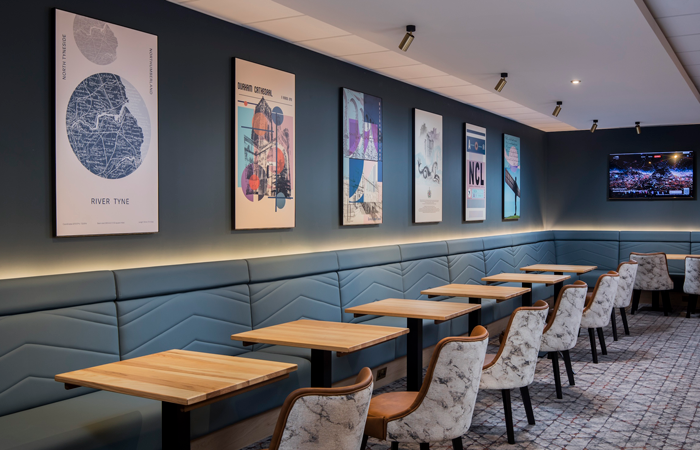
Aspire Lounge – Belfast City Airport
What opportunities has AI introduced to DV8 Designs that were previously unattainable, particularly in enhancing creativity and operational efficiency?
When it comes to technology, AI has really helped up the game of interior design. Particularly when it comes to presenting ideas to the client. AI can help adapt the style of 3D visuals for example. Some clients prefer photo realistic over sketches, and AI can allow us to easily adapt the style of presentation for each client, ultimately immersing the client to walk the journey through each customer occasion, aiding decision making and reassurance of the design scheme.
One thing I really love about technology within design, is the ability to play with lighting, which previously would have been hard to portray and amend. New software allows us much more creativity – we can adapt software to emulate the differences between day and night and ensure the placement of furniture is correct. Ultimately, lighting arguably is one of the most important design aspects as it can affect the overall mood and environment of the whole scheme. AI allows us to creatively make the most of the design, whilst still being impactful for the client.
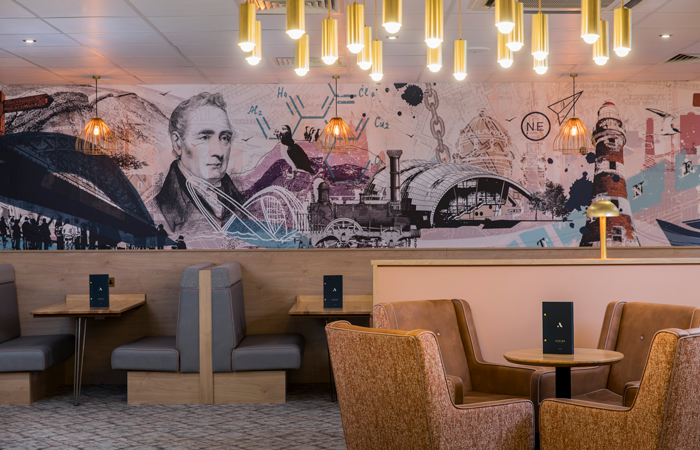
Aspire Lounge – Belfast City Airport
Implementing AI in design is not without its hurdles. Can you share some of the challenges DV8 Designs has faced while integrating AI into your projects?
Despite having all this information at our fingertips, I do think it is still hugely important to be present – I always make a point of walking in the customer shoes and imagining each occasion experience by walking the area, as well as visiting the client competition. Data is great, but it won’t give you everything when it comes to that all important first impression, and that’s where a lot of our clients appreciate our process.
Another potential hurdle could be the increased cost to the design practice as each software programme can be costly and time sensitive, resulting in time and money being spent on ensuring that design practices always have the most current software.
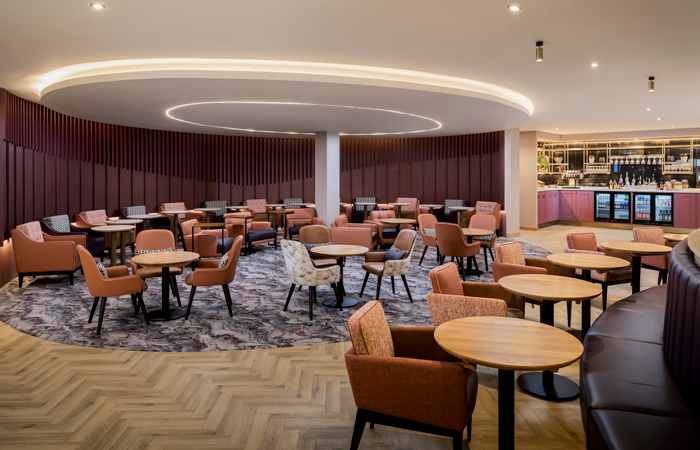
Aspire Lounge
Are there specific AI tools or technologies that DV8 Designs frequently utilizes in your design processes? How have these tools impacted your design outcomes?
Thanks to advancement and attainability of new tools, a lot of our contractors and suppliers are using similar software to us, meaning that we can seamlessly integrate their 3D models using exact measurements into our designs. What used to be labour intensive of design time, now is performed at the click of a button. This gives us greater capacity to focus on the overall design and our client’s needs, ensuring the very best outcome.
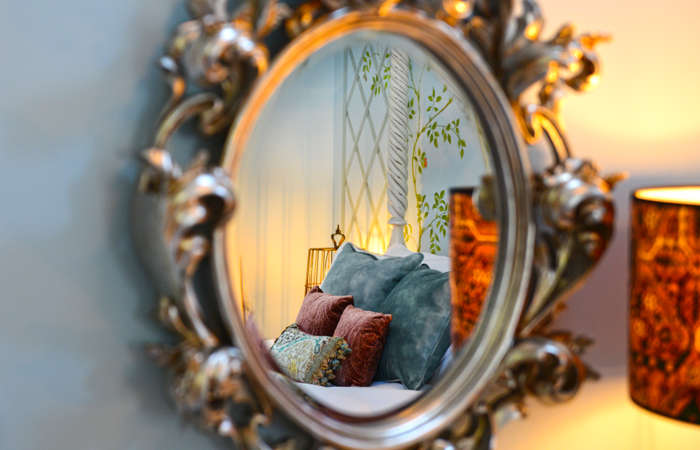
The Guinness Arms Hotel
Looking ahead, what are your predictions for the future of AI in the architectural and interior design industry, and how does DV8 Designs plan to evolve with these upcoming trends?
Looking ahead, I can see a fusion of technology and real world being the real future of design. Ultimately, AI can’t replace the intuition and human creativity of a designer, but a blend of the two would be ideal. AI can save valuable time with measurements, simulations, and data analysis, however, beyond efficiency gains, there is potential for AI to offer personalised design solutions. By analysing vast amounts of data about individual preferences, lifestyles and behaviours, AI algorithms can generate tailored design recommendations.
At DV8 Designs, we recognise the importance of meeting our clients’ unique needs and tastes, and leveraging AI to offer highly customised solutions resonates with our forward-thinking approach. The ability for a designer to instinctively understand a client’s needs and the ability to manage and anticipate challenges along the way will never be replaced. It is important to remember that whether AI is part of the design pathway or not, to accomplish the desired objectives, the design brief should be clearly articulated, explaining the outputs necessary to meet the defined goals.




